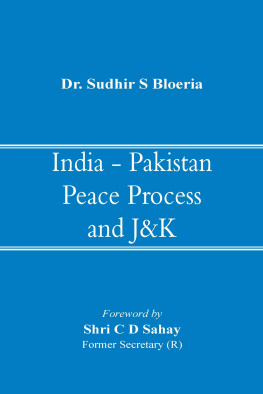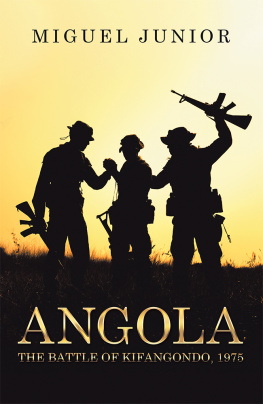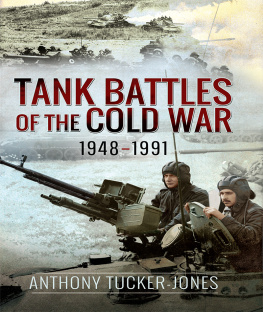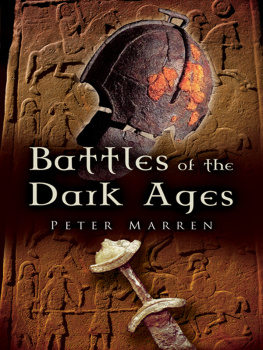Published by
Vij Books India Pvt Ltd
(Publishers, Distributors & Importers)
2/19, Ansari Road
Delhi 110 002
Phones: 91-11-43596460, 91-11-47340674
Mob: 98110 94883
e-mail:
web : www.vijbooks.in
Copyright 2021, Sudhir S. Bloeria
ISBN: 978-93-88161-13-8 (Hardback)
ISBN: 978-93-88161-14-5 (ebook)
All rights reserved.
No part of this book may be reproduced, stored in a retrieval system, transmitted or utilized in any form or by any means, electronic, mechanical, photocopying, recording or otherwise, without the prior permission of the copyright owner. Application for such permission should be addressed to the publisher.
The views expressed in this book are of the author in his personal capacity.
During the First IndoPak War of 1947, many important battles were fought in Kashmir, which have become part of Indian military folklore. Amongst these, the Battles of Zojila hold pride of place. Our breakthrough at Zojila ensured the security of Ladakh which was gravely threatened by the hostiles at that time. The battle was a memorable display of courage, determination and ingenuity fought by the Indian Army against a determined foe in hostile high-altitude terrain and adverse weather conditions.
These initial military operations by the Indian Army in 1947/48, in Jammu & Kashmir and elsewhere to preserve and protect the newly independent Union of India have not received due attention from our military historians. In the present study, the author has examined questions of strategy and tactics in a succinct, readable style with insight and imagination and, also thrown light on an hitherto unexplored subject based on primary sources.
The book deserves to be widely read by the general public as well as specialists of Indian military history in the post-Independence period. The author, Dr. SS Bloeria, Additional Chief Secretary, Govt of Jammu and Kashmir has served in the Indian Army as an officer in the Jammu and Kashmir Rifles. To him the book has been both an academic achievement, and his own personal tribute to that remarkable individualthe Indian Soldier.
GENERAL S. ROYCHOWDHURY
Chief of the Army Staff
Zojila, I heard this name for the first time in July 1965 while undergoing pre-commission training in the Officers Training School Madras. We cadets were grouped in four companies, each named after a famous battle. Mine was Zojila Company. Our Company Commander belonged to 4th RAJPUT, one of the battalions which had taken part in the famous operations in that area in November 1948. He gave us a talk on those operations, but being raw soldiers we understood very little of it.
Seven years later, I left the army and joined the civil service, and got my first posting as Sub-Divisional Magistrate, Kargil. Before taking up the new assignment, I read a number of books on Ladakh which provided sufficient information about the region, including the campaigns of Zorawar Singh and the battles fought in that area during 1947-48. My first journey over Zojila, on the way to Kargil, was memorable. Awe-inspiring massive cliffs rising sharply on both sides of the defile almost cast a spell on the travellers passing through the Zojila. Over the years, I have had the experience of traversing over this fabled pass in different modes of transport and also on foot; in extremely pleasant weather and under very difficult conditions of snow blizzards and howling winds. Each visit to that area renewed admiration for the courage and fortitude of the soldiers who fought and won under extreme climatic conditions and adverse tactical situation during 1948. This study is a modest tribute to their hard struggle and indomitable spirit.
The Ladakh and Gilgit areas of the Jammu and Kashmir State, generally referred to as the Northern Sector, are of great strategic importance due to their geographic location touching the borders of a number of countries. The British, as long as they remained in India, realized its significance, and ensured their control over the region through various stratagems. With the independence of India, creation of Pakistan and inability of the Maharaja of Jammu and Kashmir to make up his mind regarding accession of the State to either of the two Dominions, the stage was set for turbulence in the region. Tribal raiders, hostiles and personnel of Pakistan Army clashed with the State Force and elements of the Indian Army for over a year, starting from the middle of 1947 till the UN sponsored cease-fire on 1 January, 1949.
During this period of armed conflict, some heroic battles were fought. In defensive operations, the garrisons of Skardu and Punch withstood long sieges against very heavy odds and a much larger enemy force. Their performance could do proud to any army. Of the offensive actions launched by the Indian forces, the breakthrough at Zojila would probably rank amongst the three most important battles of the J&K Operations. The battle of Shaltang resulted in stemming the advance of the tribal raiders, and pushing them back from the very outskirts of Srinagar city to Uri and beyond. The battle of Jhangar resulted in the re-capture of an important military objective and securing the lines of communication of the Indians in that sector, further paving the way for the liberation of Rajouri, leading to the breaking of the siege of Punch. The third crucial engagement pertains to the breakthrough at Zojila. The struggle for the Himalayan heights there was not only the most difficult; the stakes were also extremely high. Failure at Zojila would have meant the loss of the entire Ladakh region of strategic importance, deprivation of the only Buddhist population and a constant threat to the Kashmir valley from the east. It is to the great credit of the Indian Army, its officers and Jawans, that a catastrophe of such magnitudes was averted.
Even almost after half a century, not enough has been written on the Operations of 1947-48. The official version was published, by the Ministry of Defence, only in 1987. This, along with a very limited number of books mostly written by the officers who took part in the war, do not throw sufficient light on the important battles of the period. Most of these accounts, being in the form of memoirs or regimental histories, suffer from the inherent element of subjectivity. It is in this context that the present study has been undertaken; with a view to bring out a detailed and objective account of the battles of Zojila. The sequence of incidents has been pieced together in the background of events then taking place in the J&K State in general and the Northern Sector in particular. Attempt has been made to present in greater details the valiant efforts of Indian soldiers who overcame the harsh elements of nature and a determined adversary to register probably the most important success of the 194748 Operations. These events need to be studied carefully also because J&K is still an unfinished agenda.
As mentioned earlier, not much recorded material is available on the subject. Therefore, most of the information had to be collected from primary sources. This was, no doubt, more laborious process but it has enhanced the authenticity and the credibility of the facts recorded. A few years ago, the records of the Historical Section of the Ministry of Defence, Government of India, pertaining to the 1947-48 Operations were made accessible for research purposes. These include War Diaries, Reports, Policy Directives and routine papers. Unfortunately, not many of the units and headquarters had taken sufficient care to record details of the incidents taking place and their reports are very brief and sketchy. Some of the units, on the other hand, do make up for this deficiency by comprehensive recording of the events. In this context a mention may be made of 1 Patiala. Their War Diaries are a delight to any reader, for these not only provide detailed account of day to day happenings but also include collateral information and documents.
















